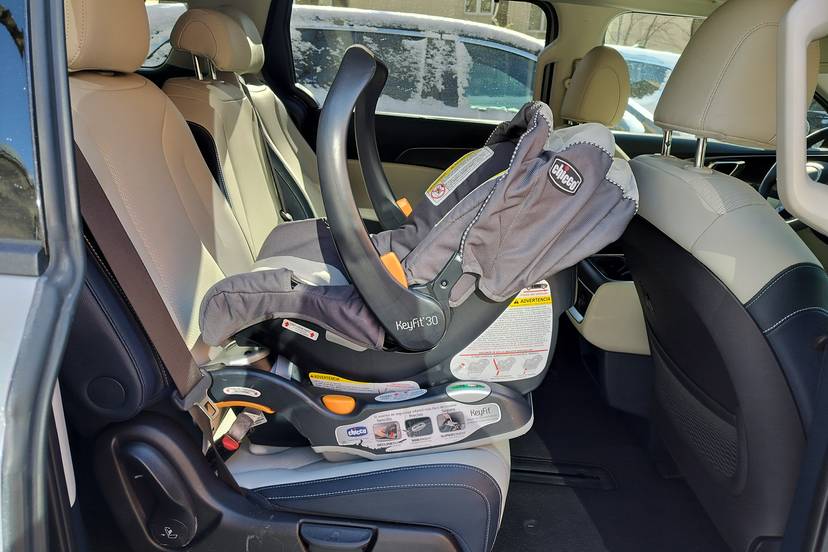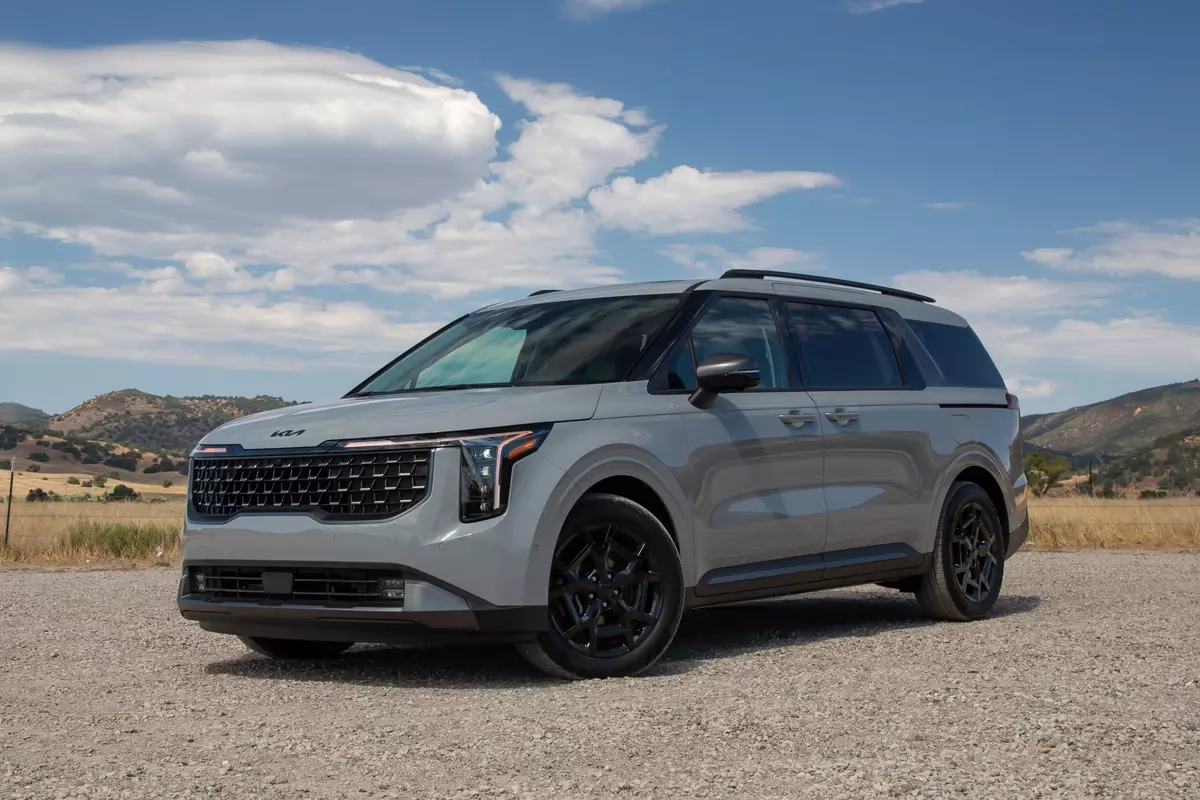
The verdict: The 2025 Kia Carnival’s new gas-electric hybrid system isn’t as powerful as the standard gas V-6, but its significant improvement in efficiency is a welcome addition, as are the Carnival’s stylistic and equipment changes for 2025.
Versus the competition: Though it’s slightly smaller than the Chrysler Pacifica, Toyota Sienna and Honda Odyssey, the 2025 Carnival Hybrid makes a compelling case with attractive pricing, a long list of features and its hybrid powertrain.
Don’t call the 2025 Kia Carnival a minivan. Or, maybe do — Kia refers to its family-hauler extraordinaire as an “MPV” (multipurpose vehicle), but brand reps on hand at the drive event in San Diego for the refreshed-for-2025 Carnival oscillated between the two designations. (Cars.com pays for its own lodging and travel when attending such manufacturer-sponsored events.) Never mind that “MPV” is used interchangeably with “minivan” depending on the market, and Kia’s own hit list is comprised entirely of the usual sliding-door suspects from Toyota, Honda and Chrysler. Minivans are uncool, you see, and Kia says its rendition is anything but lame.
Related: Kia Adds Hybrid, Price Hike to 2025 Carnival
According to the automaker’s own figures, customers appear to agree: The Carnival attracts the youngest buyers in the class, with 65% of buyers being new to Kia. Kia is also quick to call out the segment’s reliance on fleet sales, contrasted by its own pride that more than 90% of Carnivals are purchased or leased at a retail level by consumers.
Mercy for the Minivan
So, those are some positive numbers in a stagnant segment. Only a handful of minivans are sold in the U.S., those being the Toyota Sienna, Chrysler Pacifica, Honda Odyssey and the Carnival, in descending order of popularity and not counting the recently reintroduced Chrysler Voyager, which is related to the Pacifica. Just over 290,000 new minivans were sold stateside in 2023 — a figure that’s roughly 40,000 units more than what the Jeep Grand Cherokee mid-size SUV achieved alone.
The crossover was the minivan’s natural predator. A recent poignant feature in The Atlantic details the segment’s slide in the face of crossovers and larger SUVs like the Jeep that offer most of a minivan’s benefits without the minivan’s aura of dreary domesticity, noting that a “minivan is typically purchased under duress” as families grow. Kia’s method of hiding the pill in the peanut butter for the Carnival’s distinctly minivan functionality is an upright, squared-off design that eschews the soft-edged taper of its competitors. You’d be forgiven if you mistake a Carnival at distance for a strangely elongated Sorento or a fat Telluride, a trick enhanced by the 2025 Carnival’s Dark Edition that, uh, darkens the wheels and exterior trim of so-equipped models.
This stylistic direction was true of the prior Carnival, only it’s now enhanced and nip-and-tucked for 2025. A new front end with updated headlights and grille complements a significantly revised tail, with the rear now wearing more aggressive “fanged” taillights and further defined sheet metal.
The interior is requisitely poked ‘n’ prodded, as well, with moderate revisions to tech and controls. Dual 12.3-inch screens for the driver display and infotainment system are available (a single 12.3-inch infotainment touchscreen is standard), and there’s a touch-sensitive panel on the lower portion of the center dash that can toggle between climate and audio functions.
Hello, Hybrid
The biggest change is less visible and more experiential, with the newly available hybrid powertrain being a significantly more efficient alternative to the carryover 3.5-liter V-6 engine. The new hybrid setup begins with a turbocharged 1.6-liter four-cylinder that works with a traditional six-speed automatic transmission, which is different from the continuously variable automatic transmissions that most modern mainstream hybrids use.
A 1.49-kilowatt-hour lithium-ion battery and relatively potent 74-horsepower electric motor augments the gas engine for a combined 242 hp and 271 pounds-feet of torque. That’s 45 hp less than the V-6 offers, but an extra 11 pounds-feet of torque. Crucially, efficiency is way, way up, with the hybrid clocking in with an EPA-estimated 34/31/33 mpg city/highway/combined versus the V-6’s 18/26/21 mpg.
On our daylong loop through the hills and valleys just north of San Diego, the hybrid’s fuel gauge appeared barely impacted from my characteristically heavy right foot and general noncompliance with the hybrid’s best attempts to conserve fuel. Those not predisposed to aggressive driving should see an impressive cruising range in excess of 600 miles between fill-ups, which should help keep passengers happy.
Decent Dynamics
That reasonably thick 271 pounds-feet of torque should keep the driver happy, as well — in theory. With two adult men and nothing more than a set of backpacks in tow, the new hybrid is nothing more than adequate for merging and passing. It’s far, far from even the 10th most important metric when considering a minivan, but this is what happens when a staff of folks with families send a single fella with nary even a pet to review a minivan.
I kid, of course, but with a full house — the kids, a dog and a kayak — along for the ride, planning your maneuvers carefully will be necessary. I suspect this sluggishness partially boils down to the 132-pound penalty for the hybrid versus the V-6 engine for the eight-seat SX Prestige configuration, a gulf that leaps to 222 pounds when looking at the LXS trim level.
The rest is only good news. The 2025 Carnival Hybrid drives and operates much like a big-body Sorento Hybrid would, with refined ride quality and driver inputs. Brake blend between the hybrid’s regenerative and physical brakes is intuitive and not too touchy, while accelerator pedal response, shift logic and steering is exactly as inoffensive and easy as any modern crossover.
Passenger Palace
As is the case with most minivans, the Carnival Hybrid munches highway miles. The expansive cabin with its low-ish center of gravity and low-effort controls zonks the driver out in the best way, with the only stress remaining being the screaming kiddos in the back. The 1.6-liter four-cylinder is also surprisingly refined, muting itself equally well at highway speeds or in stop-and-go traffic. As this is a conventional hybrid and not a plug-in hybrid, you’re not privy to any stand-alone, full-electric driving range, but the system does offer bursts of electric-only operation in low-speed scenarios.
You’ll hardly have time to notice much of this with all the digi-toys and features available for both you and your passengers’ entertainment. The dual 12.3-inch displays on my top-trim test car were requisitely hi-res, responsive and easy to navigate, and we made good use of the Bose premium sound system. That touch-sensitive panel for climate and sound functions is reasonably intuitive, and switching between modes becomes autonomic.
Second-row space and comfort is fantastic even without the relative opulence of the available second-row captain’s chairs with power leg rests. The SX Prestige trim’s white-and-navy leather upholstery is handsome and moves the interior markedly upmarket, especially when complemented by tinsel like the Bose system and window shades for the second and third rows.
More From Cars.com:
- 2025 Kia Carnival Up Close: Now Hybrid in Another Way
- 2025 Kia Carnival: Now With Optional Hybrid Power
- Which Cars Fit 3 Car Seats?
- Minivan Crash Tests: Front-Seat Safety Improves, Backseat Safety Declines
- Shop for a 2025 Kia Carnival
Third-Row Tales
Speaking of the third row, entry and exit is straightforward, and it’s not too punishing for a more-than-full-size adult like myself, with enough legroom for my 5-foot-11 frame to easily endure trips beyond the hour mark. Seat comfort, however, is less pleasant, with a stiff, uneven bottom cushion.
And my goodness, there are so many charge ports scattered throughout the cabin. Aside from USB connections for front occupants, each front seatback features an integrated USB-C port for second-row passengers. Each side of the third row also has a USB-C port, and you could likely make use of the cargo area’s available household power outlet with a long enough charge cord.
Realistically, I’d like to load up the 2025 Kia Carnival Hybrid with all manner of kit and caboodle before levying any sort of judgment beyond what’s presented here. For now, I like it, and if you’re a family seeking an efficient, feature-rich minivan, I think you will, too.
I call the second row!
Related Video:
We cannot generate a video preview.
Cars.com’s Editorial department is your source for automotive news and reviews. In line with Cars.com’s long-standing ethics policy, editors and reviewers don’t accept gifts or free trips from automakers. The Editorial department is independent of Cars.com’s advertising, sales and sponsored content departments.













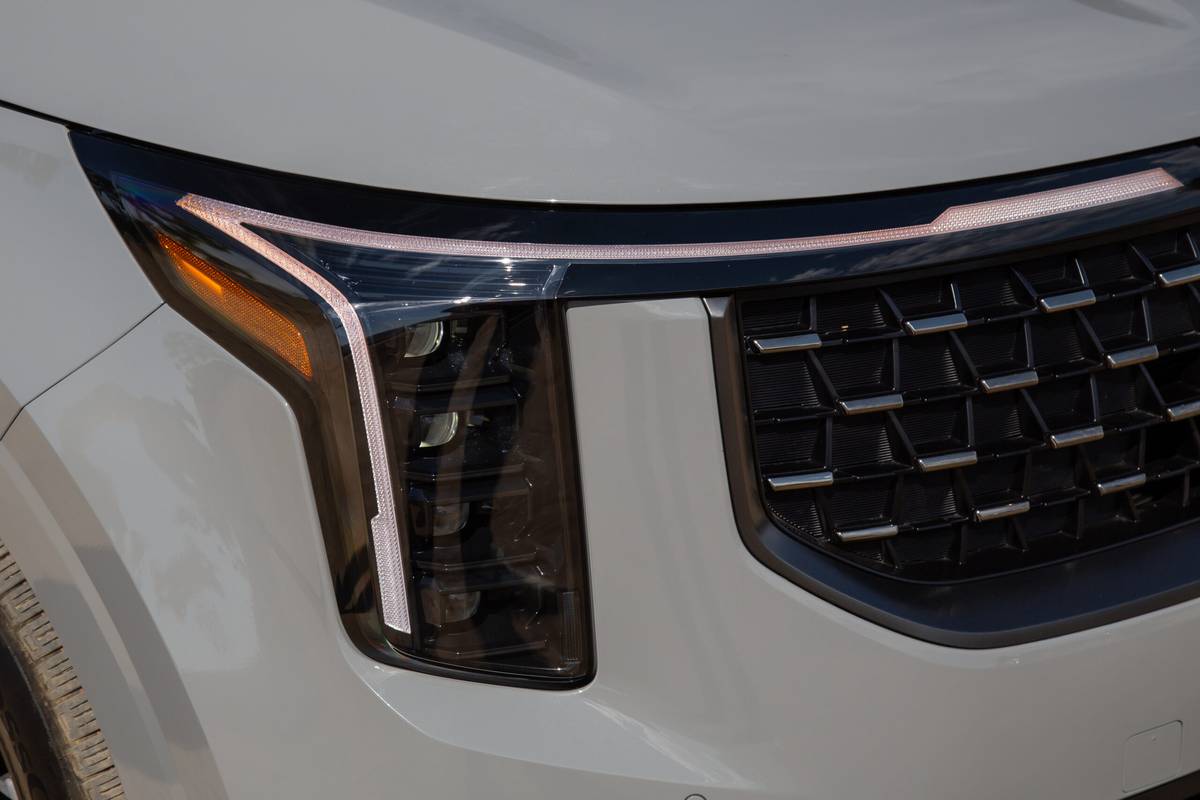
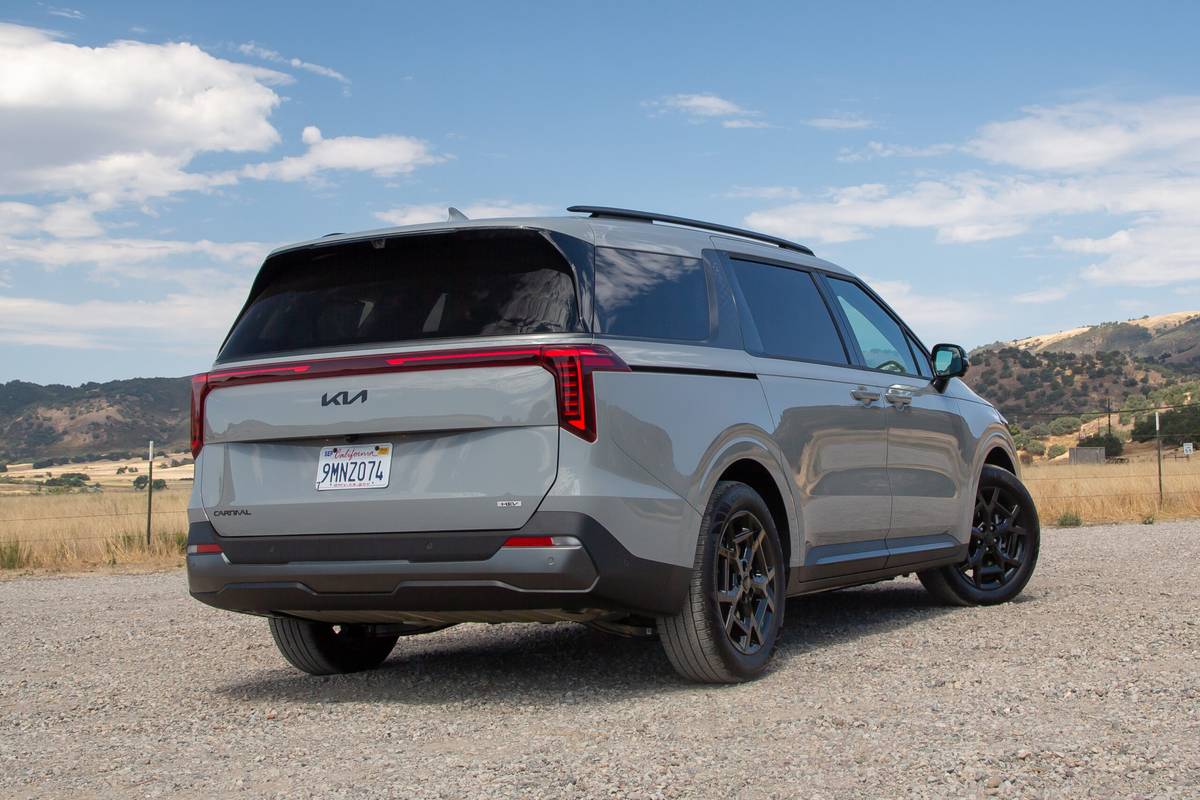






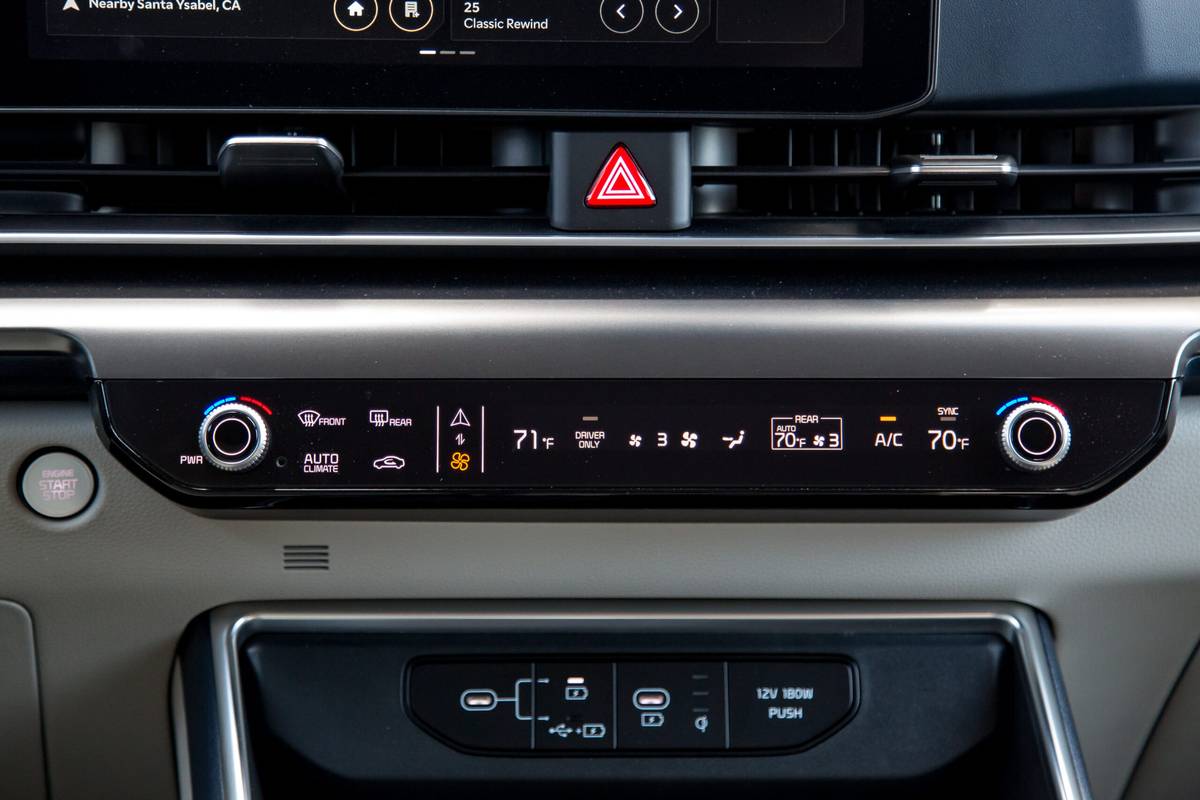
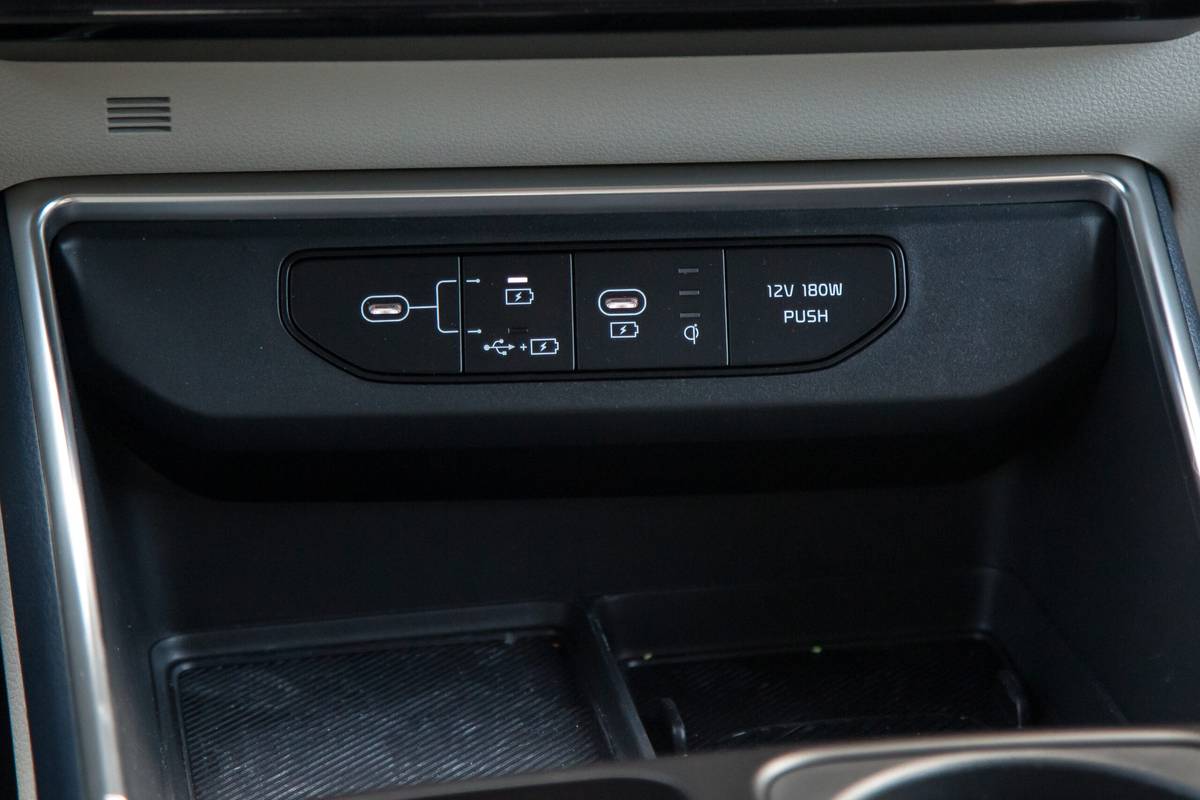

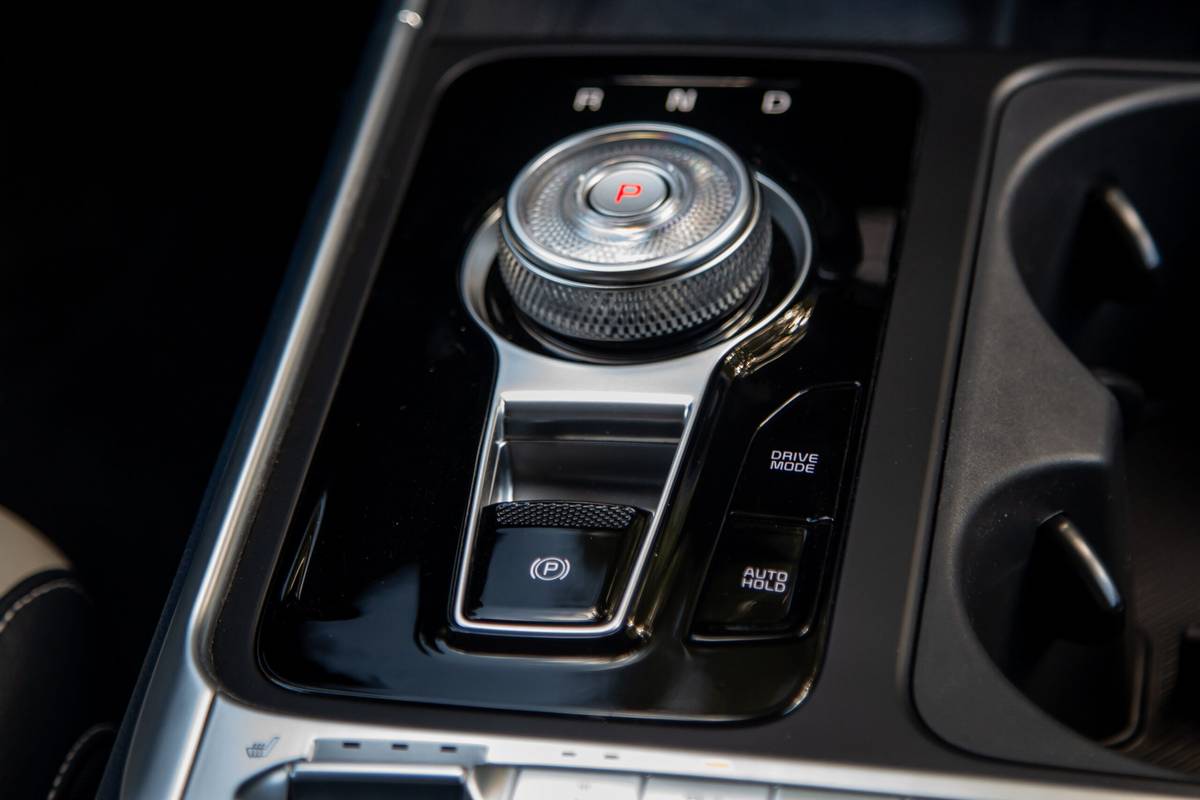




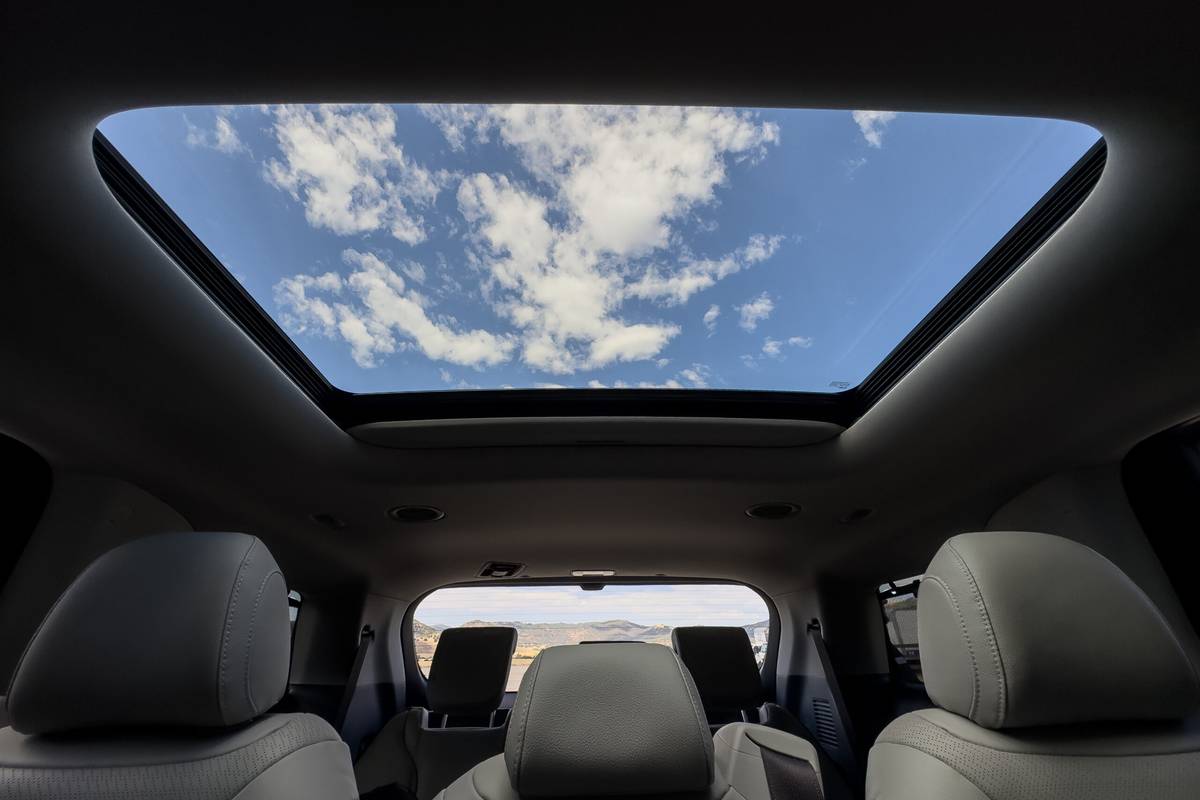
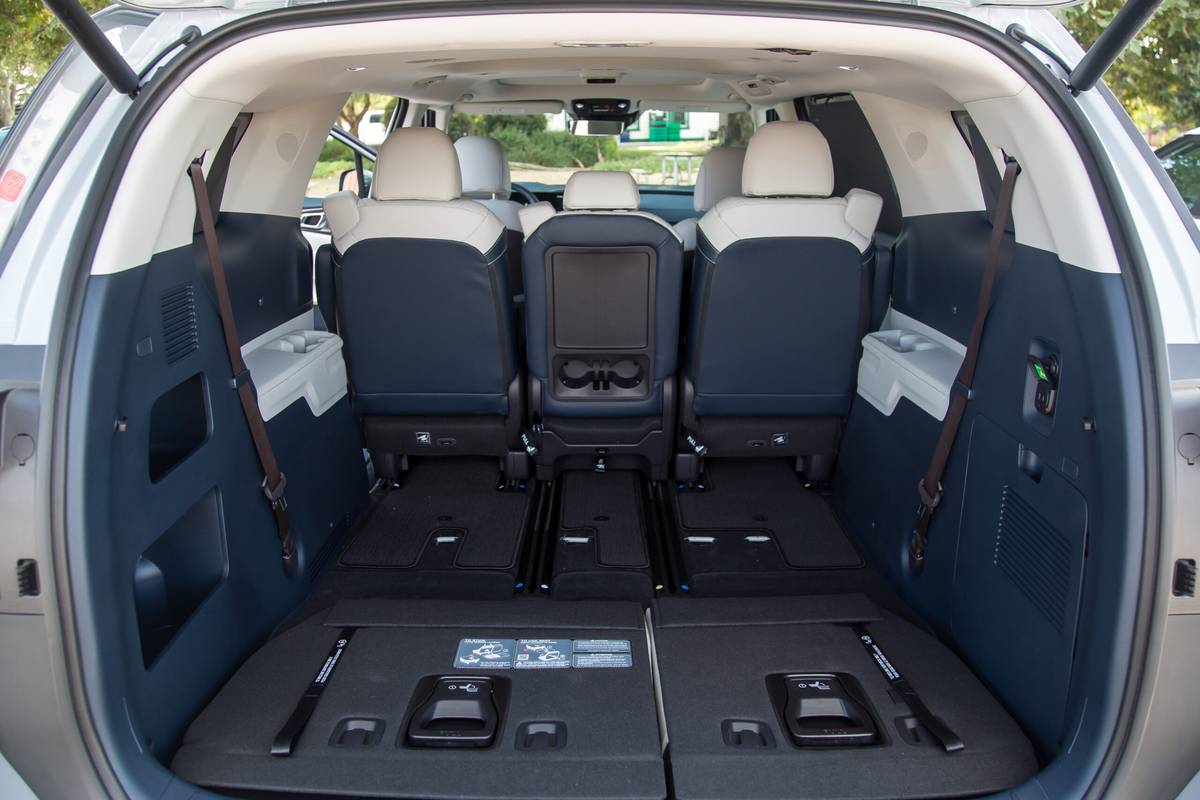
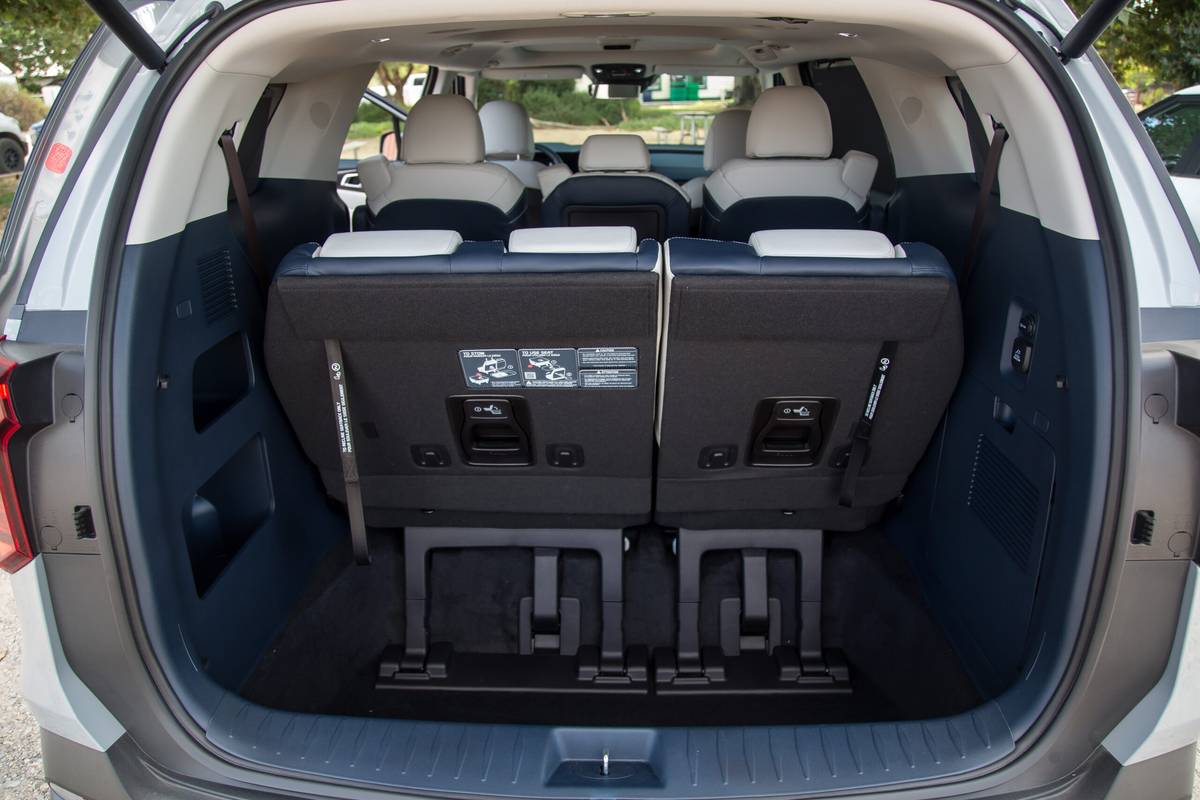





 Latch
Latch
 Infant
Infant
 Rear-facing Convertible
Rear-facing Convertible
 Front-facing Convertible
Front-facing Convertible
 Booster
Booster
 Third row access
Third row access






